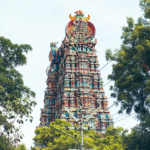
India, a land of colour, culture, and contrast, is a destination on the bucket list of many travellers around the world. From the snow-capped mountains of the Himalayas to the tropical backwaters of Kerala, from the royal palaces of Rajasthan to the spiritual Ghats of Varanasi, India offers an enticing experience unlike any other. This excites, inspires, and encourages you to book an India Tour package and enjoy your next vacation in this wonderland. But before packing your bags and hopping on the aeroplane, there is one essential step that every foreign traveller must take- obtaining an Indian Tourist Visa. In this comprehensive guide, Memorable India, your travel partner, will walk you through how to get an Indian visa, the eligibility criteria, requirements, and tips to ensure a hassle-free process. Whether you are planning a yoga retreat in Rishikesh, a food tour in Delhi, or a beach escape in Goa, here is everything you know.
A tourist visa for India allows foreign nationals to enter the country for leisure, sightseeing, visiting friends or relatives, attending short-term yoga programs, or attending cultural events. It does not permit any kind of business, journalism, or long-term education and employment-related activities.
Tourist visas come in various types depending on the duration and number of entries, including:
This is a type of tourist visa that travellers can apply for before visiting for a short term either for tourism, sightseeing, or meeting friends and relatives. The normal validation of tourist visa is 30 days but you can apply for a one year or five year e tourist visa for extended access for tourism and casual visits.
This is a long term Indian visa that is only available for some nationalities like the USA for repeat visits. This visa is valid for up to 10 years, which opens up the gates to explore India repeatedly without worrying about visa process during each tour or planning.
This is a special type of tourist visa that is available to grant entry to specific categories like people of Indian origin, spouses or children who are from India or foreigners who own property in India. This India visa for foreigners is also known as a ‘general purpose visa’ and is issued for five years but can be extended.
Before applying for any of the above-mentioned types of visas, here are some key considerations that you need to know:
Citizens of most countries are eligible to apply for an Indian Tourist Visa who want to enjoy a trip to this marvelous country or to visit friends and family. However, e-visa facilities are available for nationals from over 160 countries, including the Indian visa for UK citizens, Indian tourist visa for US citizens, Australia, Canada, Germany, and Japan.
Eligibility Criteria:
Now, it’s time to get the answer to the biggest question, ‘How to Apply for an India Visa?’ Here is a simplified breakdown of the Indian tourist visa application process that you should follow:
Step:1
Determine Your Visa Type:
This first and the most important step is to determine which visa type you want to apply for either e-tourist visa or regular visa and check the eligibility criteria.
Step:2
Research Visa Requirements:
Each country has different requirements, so does India. Visit the official embassy or consulate website https://indianvisaonline.gov.in/evisa/tvoa.html and check out the Indian visa requirements and compile all necessary documents required for an Indian visa.
Step: 3
Online Application Process:
Go to the official visa application portal, avoid third party agents unless absolutely necessary and apply for an Indian tourist visa online. Fill out the application form, complete the details such as: full name, date of birth, nationality, passport information, expected date of arrival, travel plans and duration of stay, recent travel history, and more.
Step:4
Upload Documents:
You will need to upload the necessary documents. Now, before you ask what documents are needed for an Indian visa, check below:
Step:5
Pay The Visa Fee:
Visa fee must be paid online using a credit/debit card, or bank transfers. Fees are non-refundable even if your visa is rejected.
Step:6
Wait For Processing:
After submitting your application, you will receive a reference number. If you ask how long an Indian tourist visa takes, the application is usually processed within 3-5 working days. Some applications may be required to submit additional documents and attend an interview (though that’s rare).
Step: 7
Receive Visa:
If approved you will receive the e- visa email or regular visa by post or collect it in person. Print it (e-visa) out and carry it with you, you will need to show it at the immigration counter upon arrival in India.
Step:8
Prepare For Arrival:
Before you start your India trip, ensure you have all the necessary travel documents with you or contact our executives they will give you a detailed list of requirements before entering to India to ensure you have a hassle-free stay.
Do’s
Don’t
Now that you know the ins and outs of obtaining an Indian tourist visa, you are one step closer to discovering the magic of India. If you meet the basic criteria and follow the instructions carefully, the India visa application process is quite straightforward, especially through the e-Visa platform. Once you get the green light, India awaits with open arms, offering a soul-stirring mix of heritage, hospitality, and unforgettable experiences. So, go ahead, apply for your visa, and book your India tour with Memorable India for a lifetime experience. We will help you with Indian e-visa requirements for tourists who are backpacking. Contact us to enquire more!
The duration of the stay depends on which Indian tourist visa you have applied for. Typically, the e-tourist visa with single entry allows you to stay for 30 days in India. You can also apply for multiple entry visas with a validity of one year or five years. But remember that no matter the validation, you can stay for only 180 days during your one calendar year in India.
No, you can not apply for an India tourist visa when you are already in India. All tourist visa applications must be made before arriving in India. You can apply for an e-tourist visa on the official website and check the eligibility criteria. While some nationalities may be eligible for a visa on arrival; it is important to check the requirements in advance.
Only if the course is short term and not a full time professional program. Otherwise a student visa may be required. The tourist visa is applicable for leisure, sightseeing, and short-term tourism. It is not structured for educational purposes or long term stays.
Overstaying is a serious offence. It may result in fines, detention, or a ban on future travel to India. The Foreigners Act of 1946 outlines these penalties, with imprisonment of up to five years. If you have overstayed, it is important to inform the authorities, like the Foreign Regional Registration Office (FRRO), to resolve the problem. So, be responsible while you are travelling to a country and avoid overstaying, as it may lead to legal issues.
No, visa conversions are generally not allowed. You must exit the country and apply for the appropriate work visa, depending on India’s work visa regulations from your home country. This process requires you to meet the eligibility criteria, necessary documents, qualifications, skill set, and a legitimate job in your hand.
No, you cannot cancel your Indian visa once it is issued. If you apply for e-visa then it will simply expire if not used within the given time frame. Keep in mind that the visa fee is non-refundable, even if the visa is rejected or not granted.
Once you have received an email of refusal of your visa, you can immediately restart your India visa application process without waiting for a single minute. However, it is recommended to check Indian visa eligibility for tourists once more, this time to leave no space for rejection. Submit the new visa application.

12 Jyotirlinga Tour in India – A Sacred Journey For Shiva Devotees
30 Oct 2025
Top 12 Temples in South India You Must Visit at Least Once in Your Lifetime
26 Oct 2025
A Complete Guide To Bandhavgarh National Park For First-Time Visitors
22 Oct 2025
Best Places to Visit in Himachal Pradesh for a Honeymoon: Romantic Escapes in the Hills
17 Oct 2025
Best Places to Visit in Kashmir for a Honeymoon: A Paradise for Newlyweds
12 Oct 2025